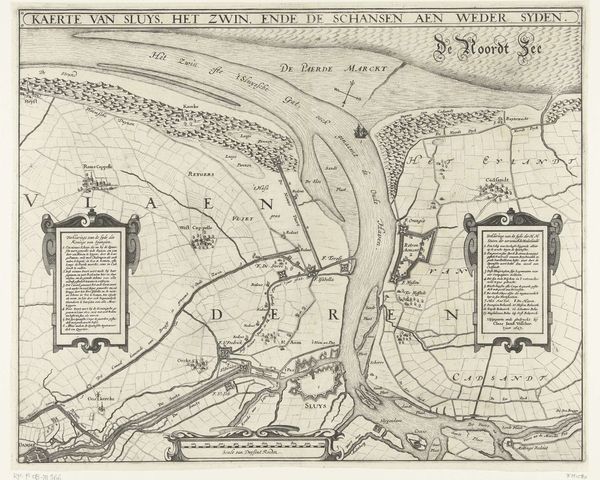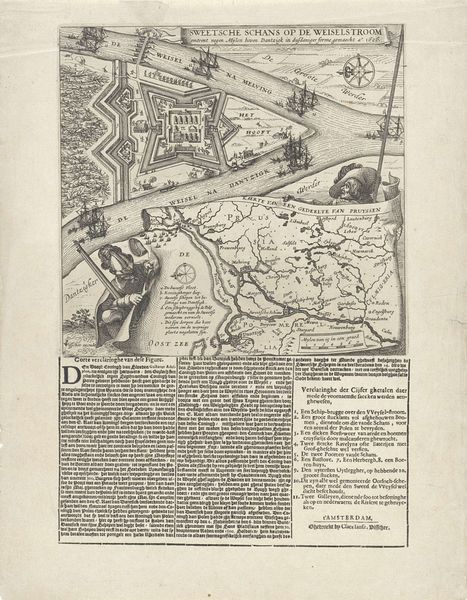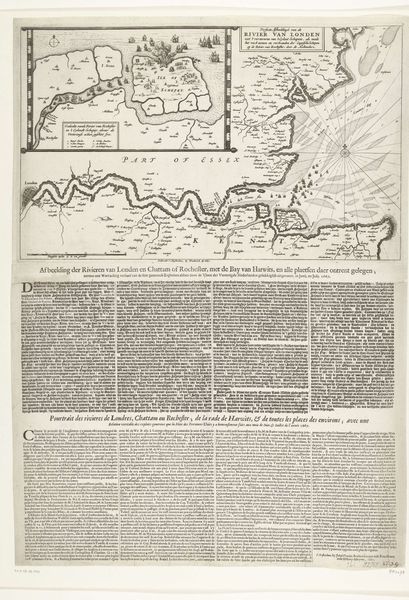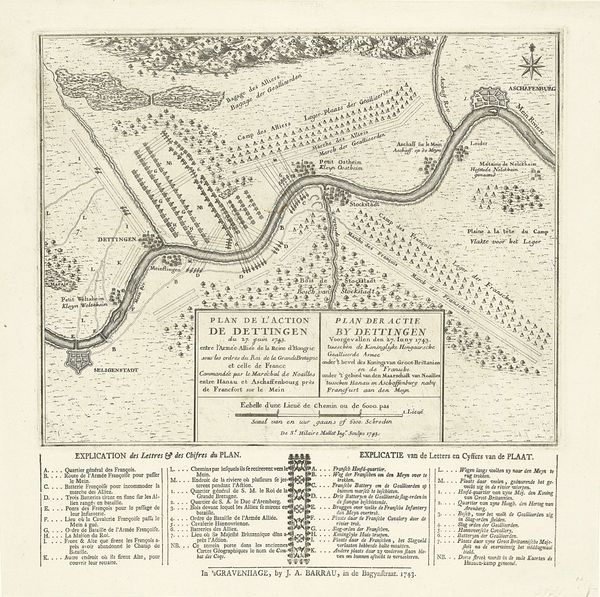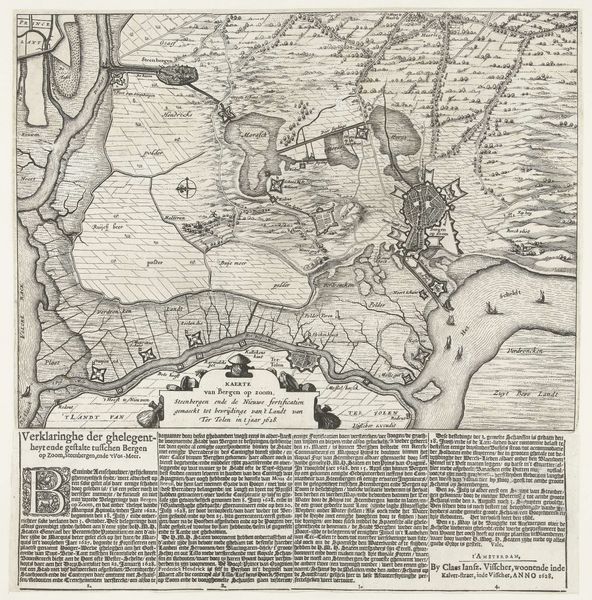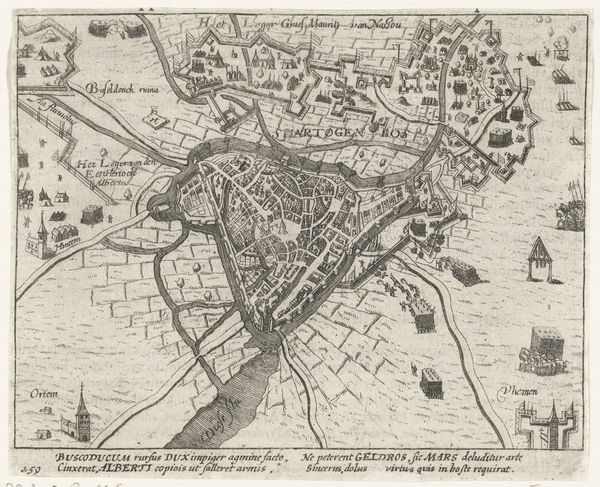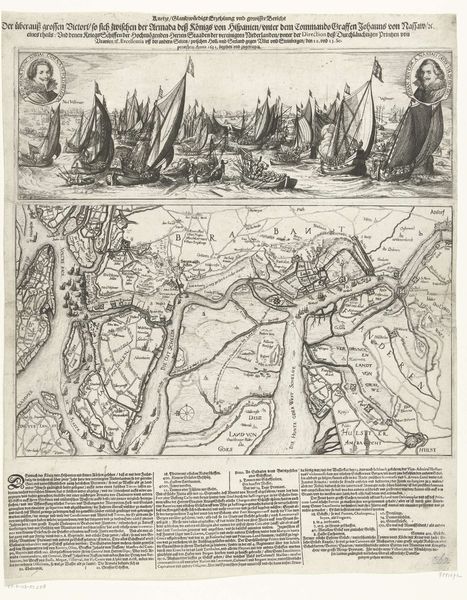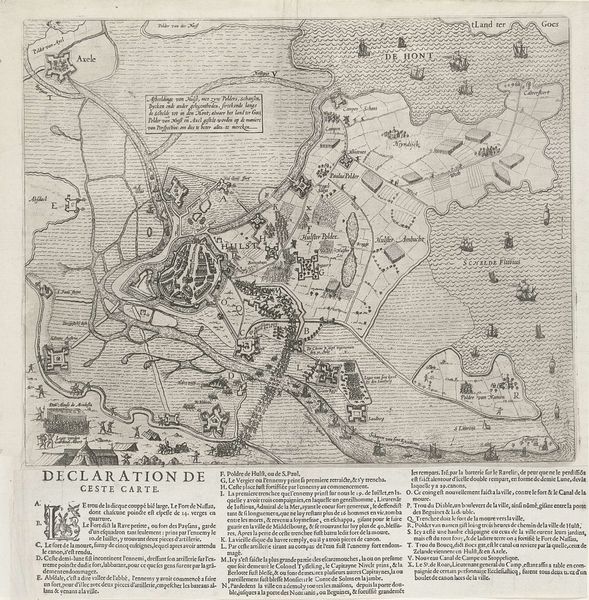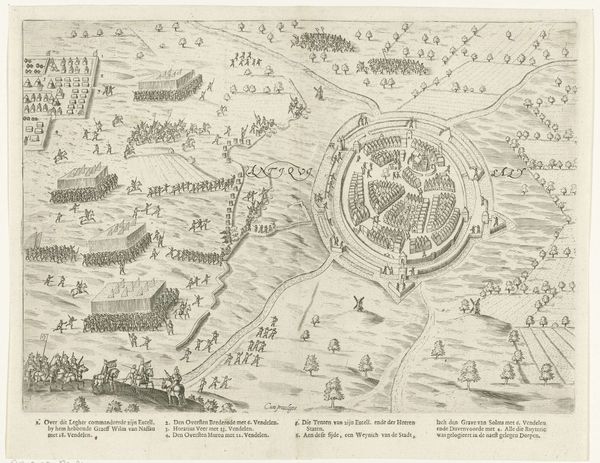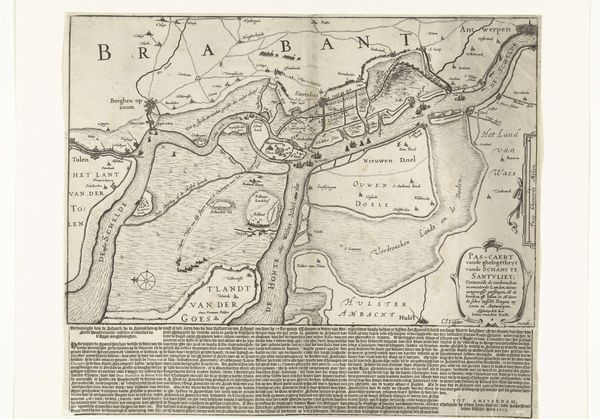
drawing, print, engraving
#
drawing
# print
#
old engraving style
#
landscape
#
geometric
#
cityscape
#
history-painting
#
engraving
Dimensions: height 502 mm, width 357 mm
Copyright: Rijks Museum: Open Domain
This “Plan van de slag bij Fontenoy” was made by Ernst Ludwig Creite in 1745. Look closely, and you’ll see it is an engraving, a printmaking technique that requires an immense amount of physical and intellectual labor. The artist would have begun by preparing a metal plate, likely copper, meticulously polishing its surface to a mirror finish. Then, using specialized tools called burins, they would have carved the intricate design into the metal, translating the chaos of battle into a precise, symbolic language of lines and forms. This process demanded not only technical skill, but also a deep understanding of spatial relationships, topography, and military strategy. The print would then have been inked, the surface carefully wiped clean, and pressed onto paper, transferring the image. The resulting print, with its crisp lines and delicate textures, served as a means of disseminating information, shaping public opinion, and immortalizing a pivotal moment in European history. Yet, the engraving also speaks to the intense labor and skill embedded in its making, a testament to the artistic practices that sit alongside the more recognized, and celebrated, fine arts.
Comments
No comments
Be the first to comment and join the conversation on the ultimate creative platform.

